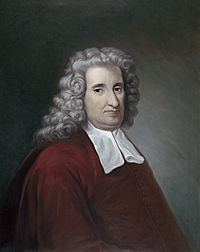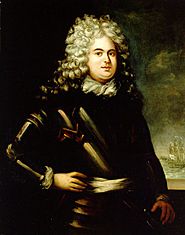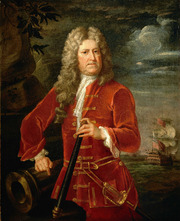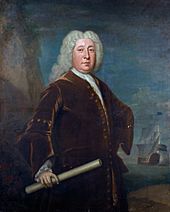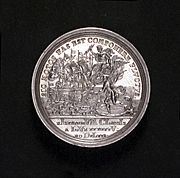Battle of Cape Passaro facts for kids
Quick facts for kids Battle of Cape Passaro |
|||||||
|---|---|---|---|---|---|---|---|
| Part of the War of the Quadruple Alliance | |||||||
 The Battle of Cape Passaro, 11 August 1718, Richard Paton |
|||||||
|
|||||||
| Belligerents | |||||||
| Commanders and leaders | |||||||
| Strength | |||||||
| 22 ships of the line 2 fireships 1 storeship 1 hospital ship 1 bomb ketch 1 bomb tender 1,444 guns 9,000 crew members |
15 ships of the line 6 frigates 1 storeship 3 bomb ketchs 2 fireships 4 storeships 7 galleys 1,320 guns 10,000 crew members |
||||||
| Casualties and losses | |||||||
| 500 killed or wounded | 2,400 killed or wounded 3,600 captured 10 ships of the line captured 4 ships of the line destroyed 4 frigates captured 1 storeship captured 1 bomb ketch destroyed 4 smaller warships captured, sunk or destroyed |
||||||
The Battle of Cape Passaro, also known as the Battle of Avola or Battle of Syracuse, was a big naval battle. It happened on August 11, 1718. The battle was fought between the British Royal Navy fleet, led by Admiral Sir George Byng, and the Spanish Navy fleet, led by Rear-Admiral Antonio de Gaztañeta.
The fight took place off Cape Passaro, which is at the southern tip of the island of Sicily. Spain had taken control of Sicily. Even though Spain and Britain were not officially at war, Britain was helping Emperor Charles VI in southern Italy.
The battle started without a formal declaration of war. But once the Spanish ships fired at the nearest British ships, Admiral Byng had a reason to attack. The British had more ships and guns. This battle was the most important naval event of the War of the Quadruple Alliance. The British fleet won a huge victory. They captured or burned sixteen Spanish ships of the line and frigates, plus many smaller vessels. Some Spanish ships were taken during the main fight. Others were captured or burned by their own crews, who then fled to the coast of Sicily. Both Spanish admirals, Gaztañeta and Chacón, were captured. Because of this battle, the Spanish army in Sicily was cut off and couldn't get help from outside. The War of the Quadruple Alliance was officially declared four months later.
Contents
Why the Battle Happened
Europe After the War of Spanish Succession
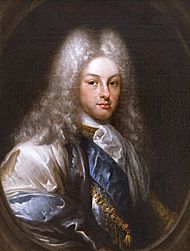
After the War of the Spanish Succession, the Treaty of Utrecht was signed on April 11, 1713. This treaty ended Spain's control over many parts of Europe. For example, the Spanish Netherlands, Kingdom of Naples, and Duchy of Milan went to Austria. The Kingdom of Sicily went to Savoy. Britain gained Minorca and Gibraltar, which were important naval bases in the Mediterranean.
This treaty helped Britain become stronger at sea. It also aimed to keep a "balance of power" in Europe. This meant no single country would become too powerful.
Spain's New Ambitions
Spain's navy was old and needed repairs. King Philip V of Spain ordered new ships to be built. A very important political leader, Cardinal Giulio Alberoni, helped reorganize Spain's government. Alberoni wanted Spain to get back Sicily and Naples. He even tried to make deals with Britain to isolate Austria.
However, the British King George I felt threatened by Alberoni's plans. This, along with Philip V's claims to the French throne, turned Britain and France against Spain. Britain, France, and the United Provinces formed the Triple Alliance to maintain peace in Europe.
Austria and Spain were also arguing over Sicily. Britain wanted Sicily to go to Austria, not Spain. So, it was suggested that Victor Amadeus II of Savoy should trade Sicily for Sardinia.
Getting Ready for Battle
Byng Heads to the Mediterranean

In early 1718, many British Royal Navy ships were prepared for action. This worried the Spanish ambassador. Admiral George Byng, a very experienced commander, was put in charge of the British fleet in the Mediterranean on March 24. His job was to try and settle the disagreements between Spain and Austria.
Byng left Spithead on June 15 with a fleet of twenty ships of the line and other smaller vessels. He arrived at Cádiz and sent a letter to the British ambassador in Madrid, William Stanhope. The letter told King Philip V that the British fleet was there to help make peace. Cardinal Alberoni wrote back, warning Byng of a defeat if he attacked the Spanish fleet. Stanhope replied that Britain was only trying to mediate.
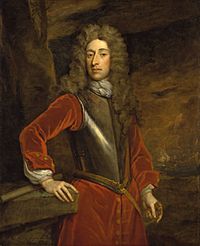
Byng continued his journey. By July 8, he learned that the Spanish fleet had left Barcelona. He was joined by Vice-admiral Charles Cornwall with two more ships. On July 23, Byng reached Port-Mahon. He was told that the Spanish fleet had been seen near Naples. Two days later, the British fleet sailed to the Bay of Naples, arriving on August 1.
Spain Invades Sicily
On June 18, a large Spanish expedition sailed from Barcelona. It included twelve ships of the line, seventeen frigates, and many transport ships. This fleet carried 36,000 soldiers and 8,000 horses. Their goal was to capture Sicily. On June 30, the Spanish fleet arrived near Palermo. The Austrian forces there were surprised and left Palermo. Within a month, most of Sicily had fallen to the Spanish with little fighting. Only Messina and a few other forts remained.
The Austrian leader in Naples, Wirich Philipp von Daun, asked Byng for help. He wanted Byng to transport 2,000 German soldiers to Messina. Byng agreed and sailed from Naples on August 6. The Spanish fleet was anchored nearby.
Byng offered a "ceasefire" in Sicily for two months, but the Spanish commander refused. With his offer rejected, Byng had to help the Austrians and Savoyards fight the Spanish. The British fleet arrived at Messina on August 8. The Spanish admirals, Gaztañeta and Patiño, were warned that their fleet was weaker than the British. An Irish officer, George Cammock, suggested anchoring near the shore for protection. However, Gaztañeta and Patiño believed Byng would not attack. They decided to sail to Malta to join other Spanish forces.
The Battle Begins
Chasing the Spanish Rear Ships
The Spanish fleet sailed from the Faro Point in a messy way. Admiral Gaztañeta did not set up a strong defense. He only left two frigates to watch the British fleet from a distance. As Byng approached, he spotted these two ships. He also learned that the main Spanish fleet was nearby. Byng sent the German troops they were carrying to Reggio and then went to find the Spanish fleet.
At noon, the British scouts found the Spanish fleet. It had 27 ships of the line and frigates, plus many smaller vessels. Byng followed them. A Spanish report said that on August 10, the Spanish ships saluted the British, showing no signs of wanting to fight. The night was calm.
The next morning, the Spanish fleet was spread out in three groups. Gaztañeta tried to get his ships into a battle line, but there wasn't enough time.
The Marquis of Mari commanded the Spanish rear group. This group was behind the main fleet, near the shore off Avola. British ships were close to them. Byng sent Captain George Walton with six ships to chase them. The British ship Argyll fired two shots near Mari's ship, El Real. Then Canterbury fired three more. Mari's ship fired back, and the battle began. The British had the advantage.
Mari's ship was badly damaged. He decided to run his squadron ashore and burn the ships to prevent them from being captured. His own ship had fifty people killed or wounded. It was run aground, and the crew escaped. But the British later refloated and captured the ship. Two Spanish frigates were completely burned. The ship Sorpresa fought back but was forced to surrender. Other Spanish ships quickly gave up after a short fight.
Attacking the Spanish Center
With the Spanish rear group defeated, Byng sent most of his ships to chase Gaztañeta's main squadron. Gaztañeta had six ships of the line and four frigates, but they were not in a battle line. The British ships Oxford and Grafton were the first to attack Gaztañeta's center. The Spanish ships fired first, even though they were disorganized. The British ships returned fire.
Oxford attacked the 64-gun Santa Rosa and captured it after a fierce fight. The 60-gun San Carlos surrendered to Captain Thomas Matthews' Kent without much resistance. Captain Nicholas Haddock's Grafton fought Príncipe de Asturias, which was badly damaged and had most of its crew killed or injured. This ship surrendered to Breda and Captain.
At 1 PM, Gaztañeta's flagship, the 74-gun San Felipe, was attacked by Kent and then by Superb. A running fight lasted for two hours between Gaztañeta's ship and Byng's division of seven ships. San Felipe was dismasted (its masts were broken) and badly damaged. But Gaztañeta refused to surrender. Byng's own ship, Barfleur, came close and demanded surrender. Gaztañeta refused and fired back. He was wounded in the leg.
Another Spanish ship, Volante, tried to help San Felipe. But it was hit by fire from three British ships and surrendered at nightfall. San Felipe, with 200 men out of action, also surrendered. Of Gaztañeta's other ships, Juno was captured by Essex after a three-hour fight.
In the darkness, Gaztañeta's San Felipe finally surrendered. Baltasar de Guevara arrived with two more Spanish ships. He saw the flagship had surrendered and exchanged fire with Byng's Barfleur. When he learned San Felipe was captured, Guevara gathered the few remaining Spanish ships and escaped. The frigate Perla and San Juan el Chicho managed to escape to Malta. George Cammock, realizing the defeat, sailed his flagship San Fernando and a frigate to Corfu.
Francisco Grimau's seven galleys escaped to Palermo. In total, four ships of the line, nine frigates, and some smaller vessels escaped. The 64-gun Santa Isabel was chased all night and surrendered the next morning. The British suffered very little damage, with only about 500 killed or wounded. Grafton was the most damaged British ship, but it had fought many Spanish vessels.
On August 18, Byng received a letter from Captain Walton:
Sir, We have taken and destroyed all the Spanish ships and vessels which were upon the coast, the number as per margin.
—Captain George Walton, Canterbury, off Syracuse, August 16, 1718.
End of the Battle
Walton had captured four warships, a bomb vessel, and a storeship. He also burned four other warships. After repairing his ships, Byng entered the port of Syracuse. He sent five captured Spanish ships of the line and four frigates to Port-Mahon. One of the captured ships, Gaztañeta's San Felipe, accidentally caught fire and exploded, killing 160 British and 50 Spanish sailors.
Gaztañeta and his officers were sent to Augusta. They promised not to fight against the Austrian armies for four months. About 2,600 wounded or sick Spanish prisoners were also freed. The Spanish ships that escaped to Malta were refused entry by the Grand Master of the Knights Hospitaller, who supported Austria.
What Happened Next

Byng had destroyed or captured most of the Spanish fleet. He then tried to help lift the Siege of Messina. Even though German reinforcements arrived, the city surrendered on September 29. The Marquis of Lede then controlled almost all of Sicily. Byng sent four of his ships to block the Spanish army and deal with any remaining Spanish ships.
Because Byng's attack had almost completely destroyed the Spanish fleet, Spain's situation in Sicily became much worse. Their army was stuck on the island without supplies or new troops. Cardinal Alberoni was very upset. He banned any news about the battle and took action against Britain. He ordered the British ambassador to leave Spain and allowed Spanish privateers (private ships allowed to attack enemy ships) to seize British vessels and goods in Spanish ports.
Byng sent his oldest son to England with a full report of the battle. In November, he received a personal letter from Emperor Charles VI:
Admiral Sir George Byng,
I have received with a great deal of joy and satisfaction, by the bearer of this, yours of the 18th of August. As soon as I knew you was named by the king your master to command his fleet in the Mediterranean, I conceived the greatest hopes imaginable from that very circumstance. The glorious success yon have had surpasses, however, my expectations. You have given, upon this occasion, very singular proofs of your courage, conduct, and seal for the common cause: the glory you obtain from thence it indeed great, and yet my gratitude falls nothing short thereof, as Count Hamilton will fully inform you. You may always depend upon the continuance of my thankfulness and affection towards you: may God have yon always in his holy keeping.—Charles VI, Holy Roman Emperor, Vienna, October 22, 1718.
On December 26, Great Britain officially declared war on Spain. France did the same on January 9 the next year. Despite the bad news, Alberoni still refused to accept the terms of the Quadruple Alliance. He tried to turn the war around by planning an invasion of Britain. He sought help from King Charles XII of Sweden and the Jacobite pretender, James Francis Edward Stuart. The plan was to invade western England with 5,000 men.
To stop Sweden from getting involved, Britain sent a fleet to the Baltic. The Swedish ships stayed in port, and no naval battles happened there. Also, on December 11, Charles XII was killed during a siege. Spain lost its only possible ally. Alberoni decided to continue the invasion plan anyway. But off Cape Finisterre, a huge storm scattered the Spanish fleet. Many ships sank. Three frigates and five transport ships with troops reached Scotland and landed about 400 men. But they were quickly defeated at the Battle of Glenshiel.
Ships in the Battle
Britain (Admiral Sir George Byng)
- Barfleur 90 guns (Admiral Sir George Byng's flagship)
- Shrewsbury 80 guns (Vice-Admiral Charles Cornwall)
- Dorsetshire 80 guns (Rear-Admiral George Delaval)
- Breda 70 guns
- Burford 70 guns
- Captain 70 guns
- Essex 70 guns
- Grafton 70 guns
- Kent 70 guns
- Lenox 70 guns
- Orford 70 guns
- Royal Oak 70 guns
- Canterbury 60 guns
- Dreadnought 60 guns
- Dunkirk 60 guns
- Montagu 60 guns
- Rippon 60 guns
- Rupert 60 guns
- Superb 60 guns
- Rochester 50 guns
- Argyll 50 guns
- Charles Galley 44 guns
The British fleet also had 6 smaller vessels: two fireships (Garland and Griffin), a storeship (Success), a hospital ship (Looe), a bomb-ketch (Basilisk), and a bomb tender.
Spain (Rear-Admiral Don José Antonio de Gaztañeta)
- Real San Felipe (San Felipe El Real) 74 guns (Rear-Admiral Antonio de Gaztañeta's flagship) – Captured, then blew up.
- Príncipe de Asturias 70 guns (Rear-Admiral Francisco Chacón) – Captured.
- San Juan Bautista 60 guns – Escaped.
- San Luis 60 guns (Rear-Admiral Don Baltasar Vélez de Guevara) – Escaped.
- San Pedro 60 guns – Escaped.
- San Carlos 60 guns – Captured.
- Real Mazi (El Real) 60 guns (Rear-Admiral Marquiss de Mari) – Captured.
- San Fernando 60 guns (Rear-Admiral George Cammocke) – Escaped.
- Santa Isabel / San Isabel 60 guns – Captured.
- Santa Rosa 60 guns – Captured.
- Perla de España 54 guns – Escaped.
- San Isidro 46 guns – Captured.
- Hermione 44 guns – Escaped, then burned.
- Volante 44 guns – Captured.
- Esperanza 46 guns – Burned to avoid capture.
- Juno 36 guns – Captured.
- Sorpresa 36 guns – Captured.
- Galera 30 guns – Escaped.
- Castilla 30 guns – Escaped.
- Conde de Tolosa 30 guns – Escaped, then captured later.
- Tigre 26 guns – Captured.
- Águila 24 guns – Captured.
- San Francisco de Asís 22 guns – Escaped.
- San Fernando Menor 20 guns – Escaped.
- San Juan Menor 20 guns – Escaped, then captured later.
- Flecha 18 guns – Escaped.
The Spanish fleet also had three bomb ships, a fireship, one ordnance store ship, three ordinary store ships, a settee, and seven galleys.
See also
 In Spanish: Batalla del cabo Passaro para niños
In Spanish: Batalla del cabo Passaro para niños
- Kingdom of Sicily under Savoy


